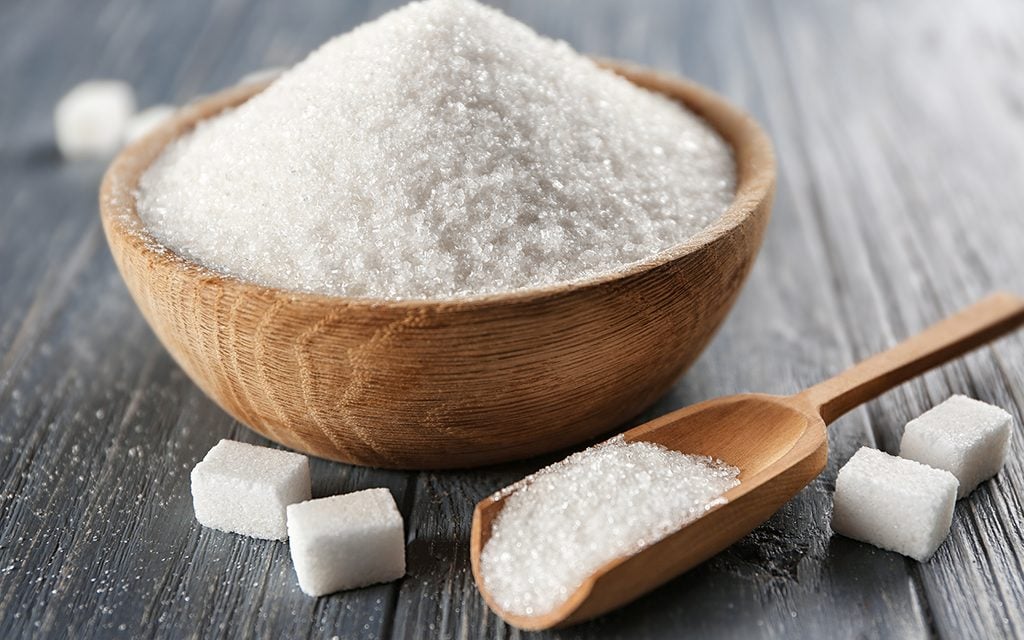How Is Sugar Made?
Updated: Nov. 27, 2019

You probably use sugar nearly every day, whether added to your morning coffee or stirred into your baked treats. But have you ever wondered how sugar is made?
Sugar is a household staple, thanks to its many uses. It’s a core ingredient in baking, sweetens up a cup of tea and can even exfoliate your skin in a DIY scrub. So, grab a cup of coffee, sweeten it to perfection and read all about how the sugar on your table came to be.
How Is Sugar Cane Grown?
Sugar cane is a type of perennial grass, and it needs a warm climate to thrive. As such, it’s commonly grown in tropical climates like Brazil, as well as in some parts of the U.S., such as Florida, Louisiana and Texas. The American Sugar Refining Group, whose brands include Domino Sugar, is based in southern Florida.
While sugar cane can be grown from a seed, you can actually bury a mature stalk and watch 10 buds sprout up from it. How neat! Mature sugar cane looks similar to bamboo, with jointed stems. Once it’s fully grown, it’s then harvested and transported to a sugar mill for processing.
How Is Sugar Made?
When the sugar cane arrives at the mill, that’s where the real fun begins. First, the stalks are washed, cut into shreds, and pressed using big rollers. The juice is separated from the plant material, then the liquid is boiled until it crystallizes. Finally, the crystals are separated from the liquid using a centrifuge, yielding raw sugar.
Hold on, though: this isn’t the same “raw sugar” you can buy at the grocery store. At this point, it still has lots of impurities, so it’s sent to a cane sugar refinery to be filtered. From here, sugar goes through various treatments depending on what type of sugar it will ultimately become. Fun fact: all sugar is harvested the same; it’s not until it gets to the mill that it turns into different types of sugar, such as granulated sugar and brown sugar.
According to the American Sugar Refining Group, a sugar cane stalk is 72% water, 12% sugar, 13% fiber and 3% molasses. White granulated sugar is made by removing all of the molasses. Brown sugar retains some of the molasses, which gives it its darker color.
Fun fact: sugar cane fiber can be turned into disposable plates, bowls and takeout containers. Read more about it here.
Types of Sugar
When you walk down the baking aisle of your local grocery store, you see several different varieties of sugar. Here are their differences.
- Granulated Sugar: Most people use this type of white sugar on a daily basis, and it’s most often used in baking. Granulated sugar has all of the molasses content removed, giving it the white color.
- Brown Sugar: Dark and light brown sugars retain much of the naturally occurring molasses—the more molasses, the darker the sugar.
- Golden Sugar: This is a brand-new sugar recently developed by Domino. It’s a less-processed version of granulated sugar. It retains some of the naturally occurring molasses, but it can be used cup for cup in place of white sugar. Learn more about Golden Sugar here.
- Powdered or Confectioners’ Sugar: This light, fluffy sugar is made by grinding up granulated sugar and adding a small amount of cornstarch to prevent clumping.
- Raw Sugar: Also called turbinado sugar, this product is usually light brown in color and has larger crystals. It’s filtered only minimally to retain much of its natural molasses content.
